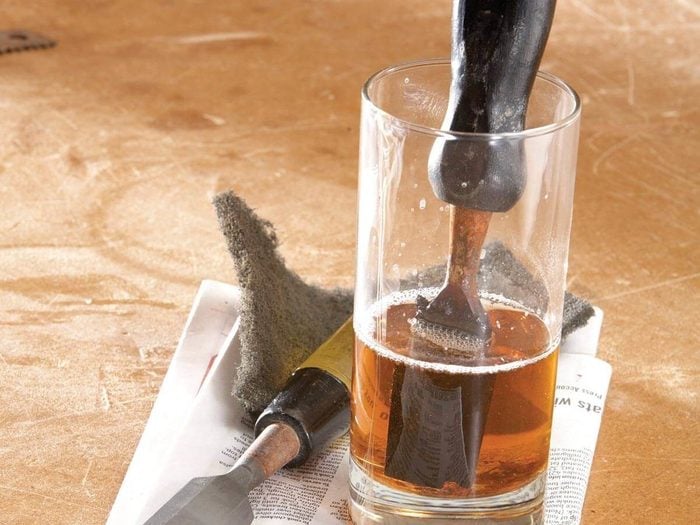
Clean Rusty Tools With Vinegar
Catherine Miller found a much easier way to clean rusty tools than scraping and sanding them. She poured white vinegar into a tin can (we used glass) and put a rusty wood chisel in the vinegar to soak overnight. The next day, with the help of a Scotch-Brite pad, all the rust came off with little effort. The blade still needed sharpening, but the chisel was almost as good as new. Catherine wraps larger tools in a vinegar-soaked rag, covers the rag with a plastic bag or plastic wrap and then leaves it for 24 hours. After cleaning off the rust, you just rinse the tool in the clear water and wipe it dry.
Make sure to read about these cleaning products you should never mix.
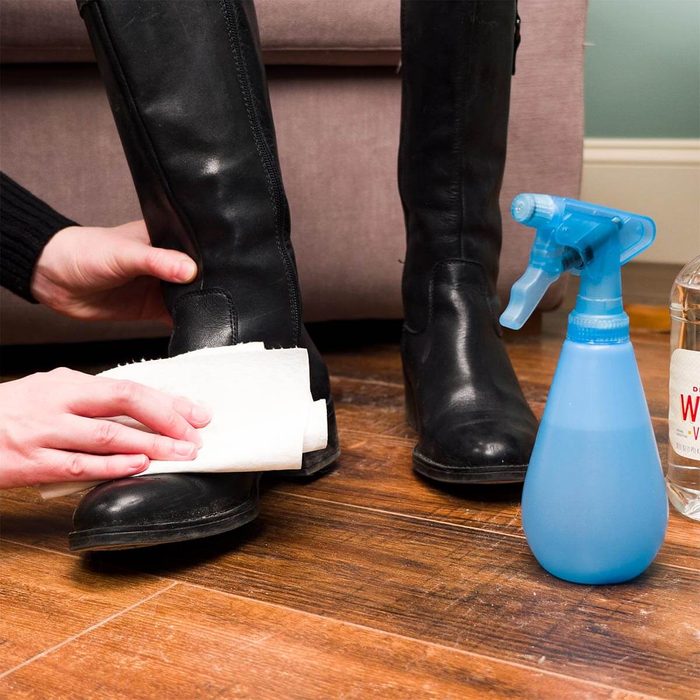
Get Rid of Salt Residue on Shoes
You can clean off the residue quickly with a simple solution that you can make at home. Fill a spray bottle with water and add a couple of tablespoons of white vinegar. Shake it up a bit and spritz the mixture onto a clean paper towel. Gently wipe your shoes, and watch the salt residue disappear. Keep the spray bottle near your shoe collection, so you can clean off your shoes as the season goes.
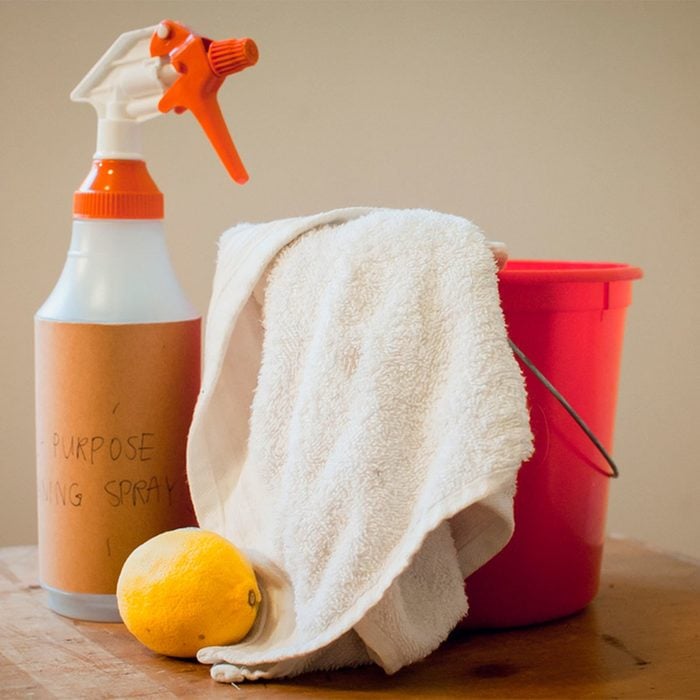
Homemade All-Purpose Cleaner
Try using a homemade all-purpose cleaner on countertops and surfaces to disinfect and freshen your home. A homemade cleaning solution recipe includes vinegar, which removes stains and odors and anti-microbial essential oils to keep your home germ free. Here are some ways to upgrade your DIY cleaner.
Bet you didn’t know you could use baking soda this many ways around the house.
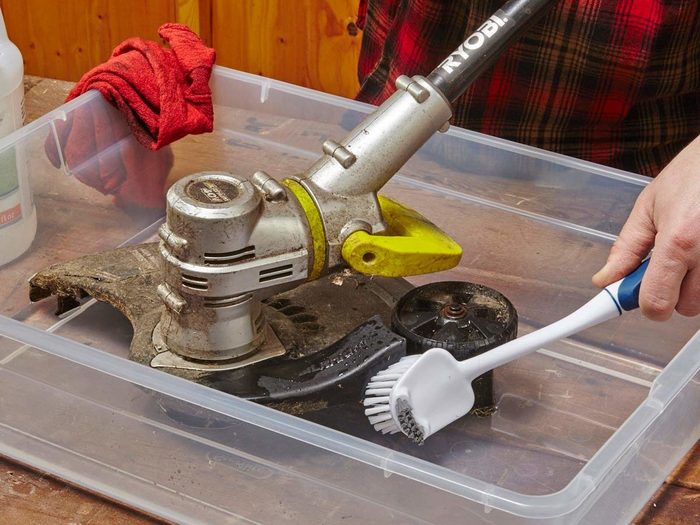
Vinegar Gets the Gunk
I like to keep my lawn equipment really clean. For items like my string trimmer, I simply scrub off all the muck with an old dish brush and white vinegar. It takes about 15 minutes for my string trimmer to go from drab to fab! — Richard Johnson
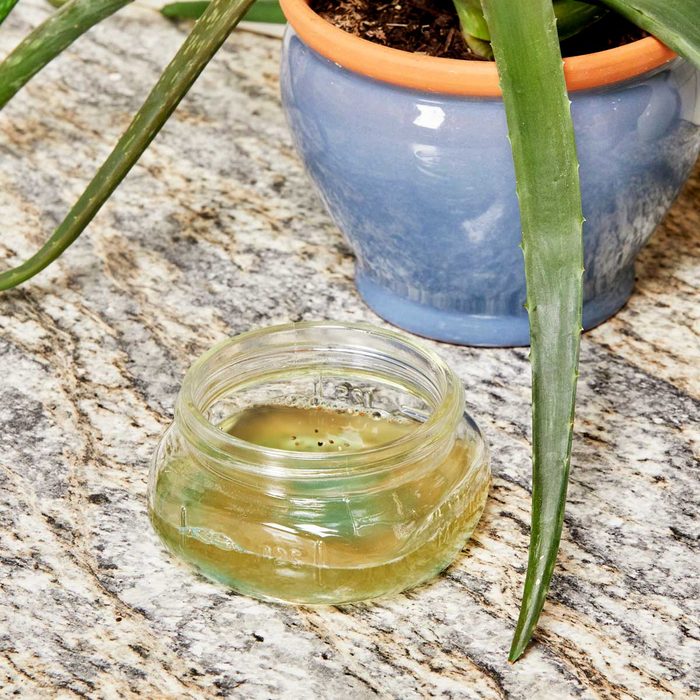
The Best DIY Gnat Trap to Try
Tired of the annoying gnats around your home? Gather a few small jars and pour in 4 tablespoons of apple cider vinegar and whirl in a few drops of liquid dish soap. With the lids off, place the jars wherever you see the most gnats. The gnats will be drawn to the smell of the apple cider, but once they land in the mixture, the soap makes it difficult for them to escape. These non-toxic traps work like a dream. I set them out one night and the next morning, all the gnats were in the jars! — Gina Kinnan
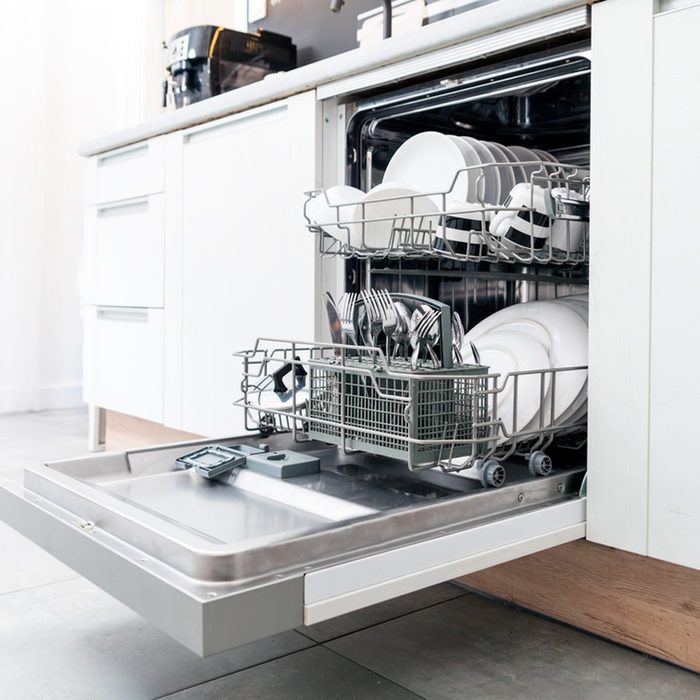
Add Vinegar to Your Dishwasher
Use vinegar in your dishwasher to give your glassware an extra sparkle and prevent filmy residue from hard water. To give this trick a whirl, make sure your dishwasher is completely full—the best and most environmentally conscious way to go—then place a small bowl that’s half full of white vinegar (yes, we’re optimists). Make sure the bowl is dishwasher-safe, and stabilize it in the top rack. To avoid any possible damage to the dishwasher’s gaskets, don’t pour the vinegar directly into the rinse aid compartment.
Then add dishwasher soap and run a regular cycle. From its top-tier position, the vinegar should evenly distribute among both levels. Then remove and enjoy your gleaming glassware.
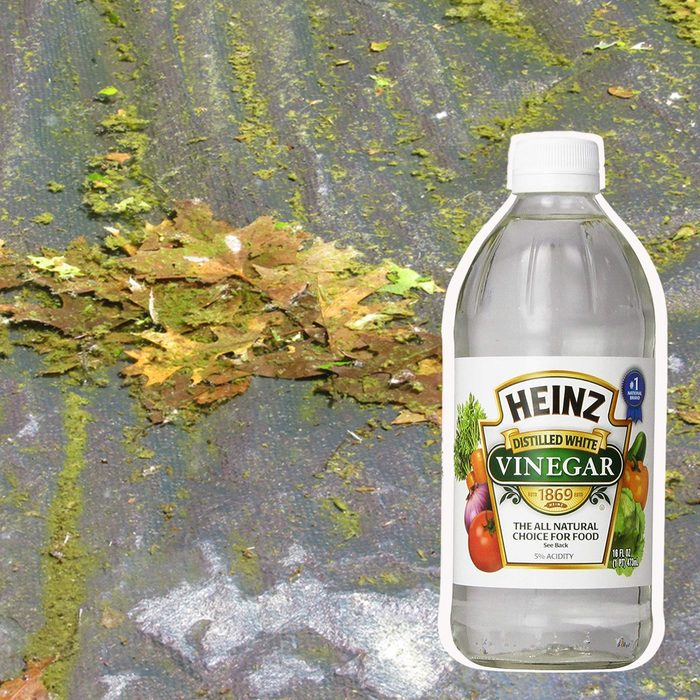
Erase algae with white vinegar
Forget renting a power washer! All you need to get rid of that unwanted icky green stuff on your patio is to spray it with full-strength distilled white vinegar.
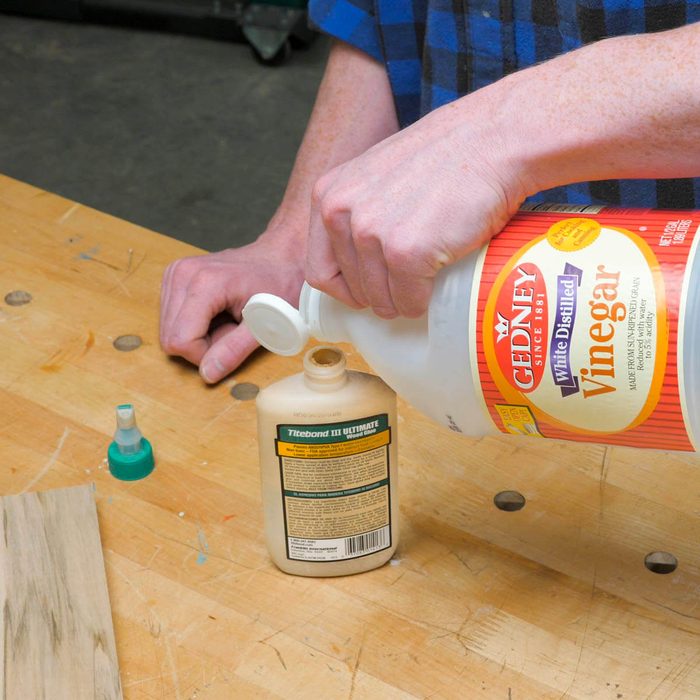
Thin Wood Glue
I recently wrote to the Borden company, asking what to do when their Elmer’s wood glue gets too thick to use. They wrote me back and suggested mixing in a drop or two of vinegar. It sounded like an old wives’ tale, but I tried it and found it really works!
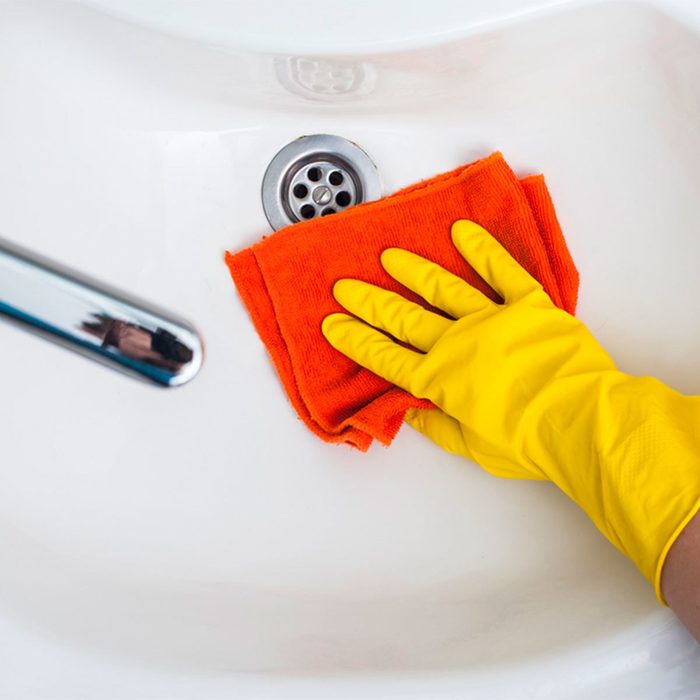
Simple Cleaner Soft Scrub
Industrial soft scrub cleaners can contain strong chemical ingredients, but you can get your tub and shower just as clean with a homemade cleaner. This simple soft scrub recipe will clean a bathroom faster and better and uses a mixture of baking soda and vinegar, which will dissolve hard mineral deposits and easily cut through soap scum.
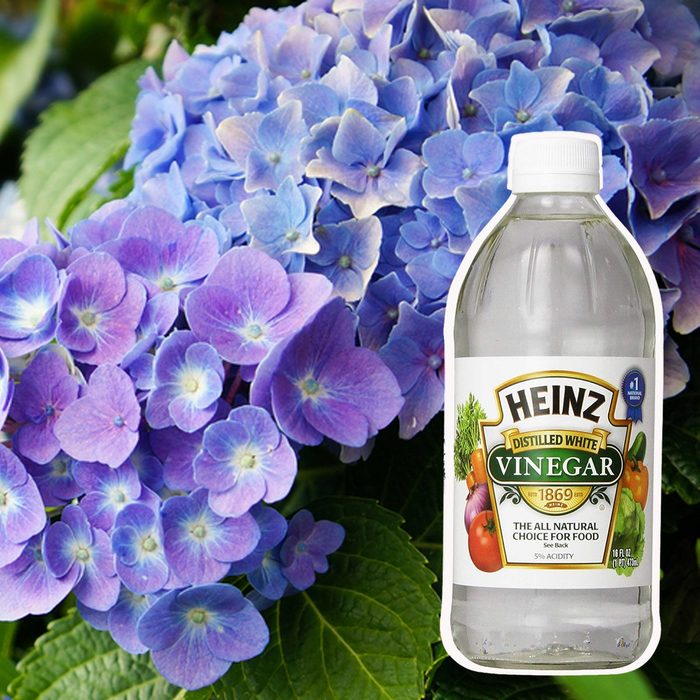
Turn Pink Hydrangeas Blue with Vinegar
Unlike baking soda, distilled white vinegar is acidic, and acidic soil is the secret to turning your pink hydrangeas blue. (Note: This doesn’t work on white hydrangeas.) Vinegar also enhances the soil of acid-loving plants like azaleas, rhododendrons and gardenias. Use a cup of white distilled vinegar to a gallon of tap water.
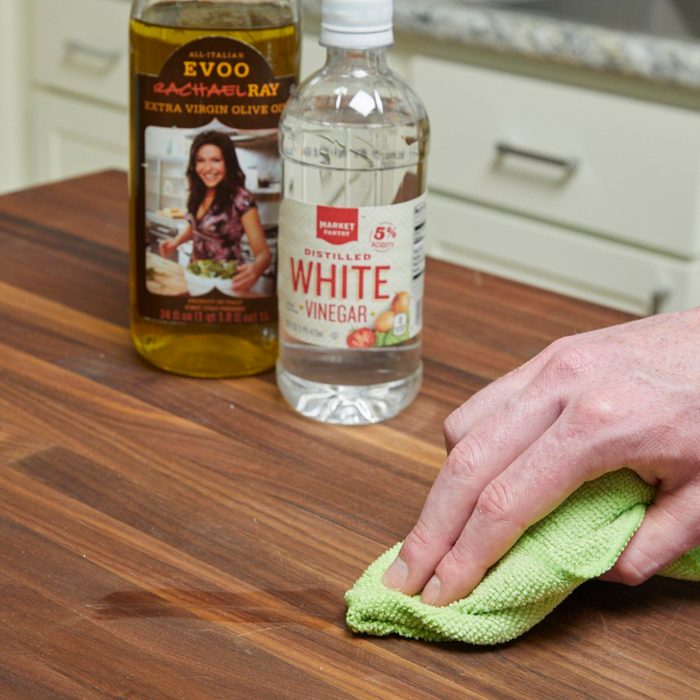
Vinaigrette Scratch Remover
Minor scratches in wood furniture don’t need to be sanded out; you can hide them. Mix one-part vinegar with three-parts canola or olive oil and wipe it on the scratch using a soft cloth. The scratch virtually disappears, and you can dress your salad with the leftovers.
Here’s how to clean your whole house in less than 30 minutes.
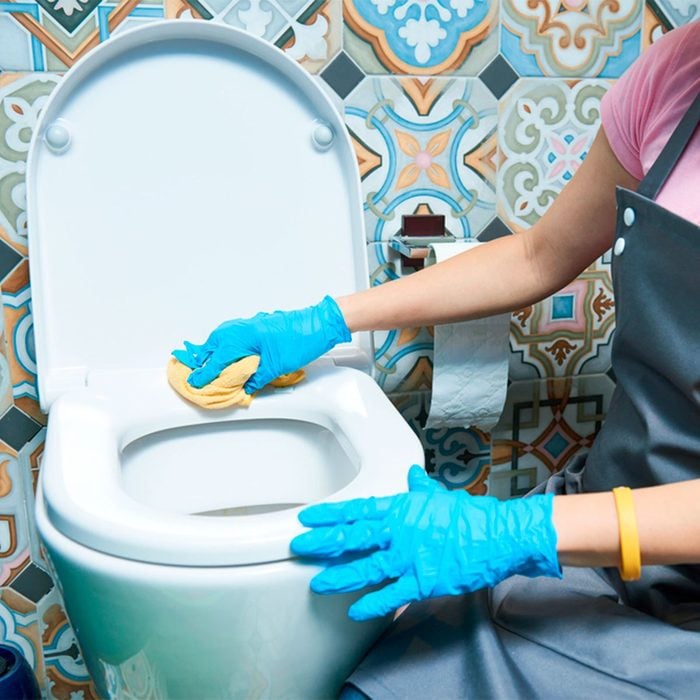
Natural Toilet Bowl Cleaner
Many commercial toilet bowl cleaners use chlorine bleach, but not this natural toilet bowl cleaner. Instead, castile soap and baking soda get the job done. Plus, you won’t have to worry about accidentally exposing your pets or children to toxic toilet water. By the way, borax is a great way to get your bathroom squeaky clean.
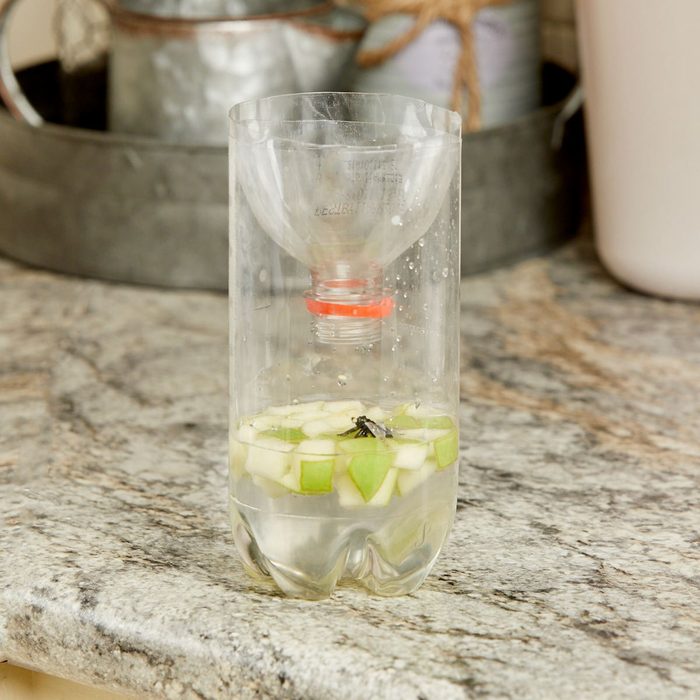
Brilliant DIY Indoor Fly Trap
Wonder how to get rid of annoying flies around your home? Wash a plastic beverage bottle and cut off the top. Stick the cutoff top upside down in the bottle’s bottom. Mark a line slightly below the bottle’s spout. This will serve as a “fill to” line. Fill with apple chunks, the riper the better, and 2 cups of white vinegar to deter bees from the trap. Place the cutoff top upside down in the bottle. Flies can easily get into the wide opening, but it’s difficult for them to get back out.
Note that the better the bait, the more effective these fly traps will be. Any type of decomposing fruit or vegetable will work, too. Try different ingredients to see what’s most effective in your house. Because you are using rotting food to attract and trap the flies, make sure to place the homemade fly trap in a place where the smell won’t bother you or the neighbors.
Follow these tips to get pantry pests out of your groceries.
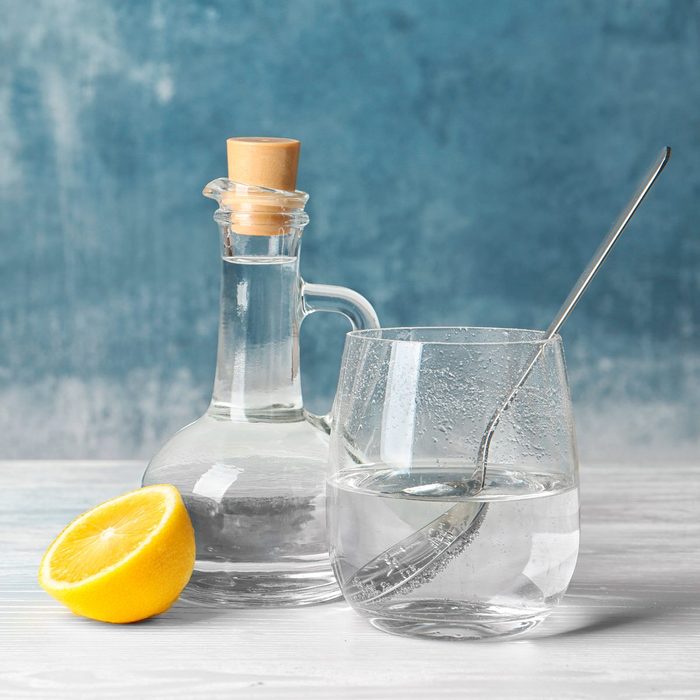
Lemon and Vinegar Cleaner
Skip the expensive store-bought surface cleaners and make an all-purpose homemade cleaning solution using vinegar. Just mix one part distilled white vinegar, two parts water and a squeeze of lemon juice. This homemade cleaner works in the kitchen, bathroom and on floors. You can add a little baking soda to help whiten grout and sinks, just rinse with water after scrubbing.
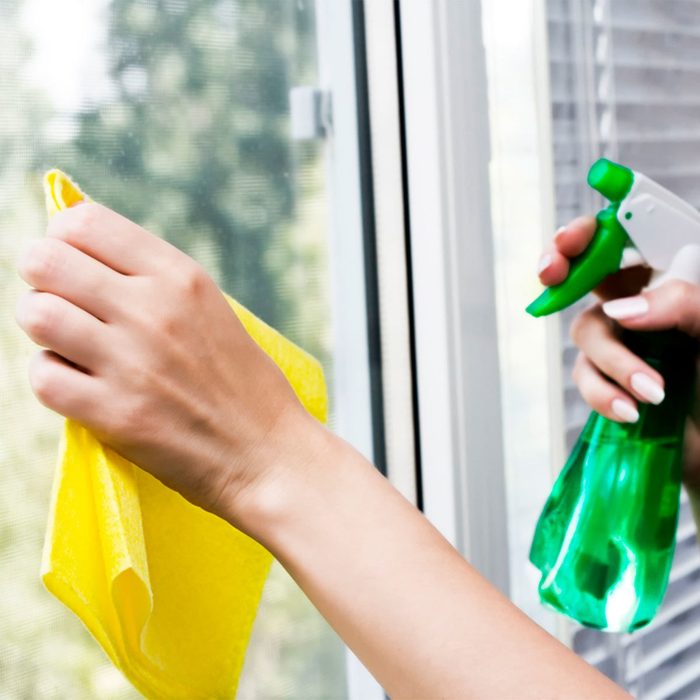
Homemade Window Cleaner
Forget using chemical cleaners to wash windows. They’ll look clean as a whistle with this all-natural homemade window cleaner, which uses vinegar and cornstarch to buff those fingerprints away.
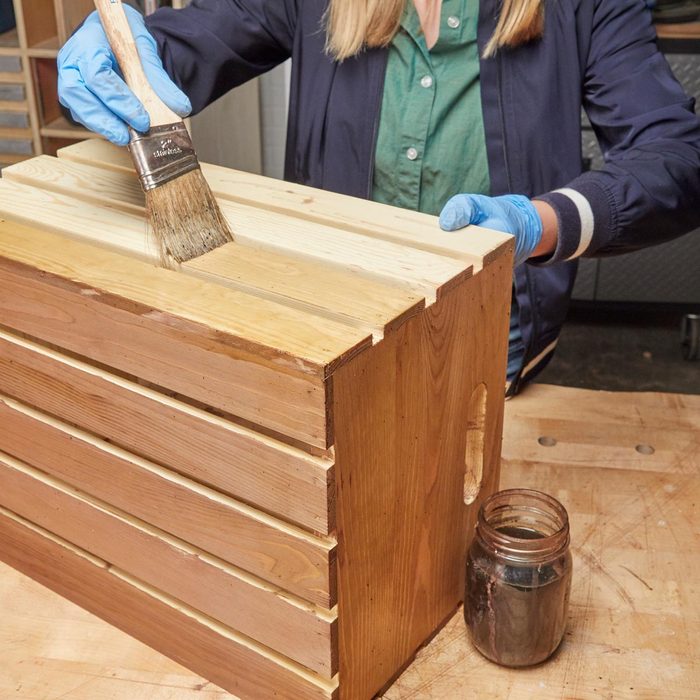
DIY Wood Stain
No need to buy a stain for your next woodworking project. It only takes a few common household ingredients: steel wool, coffee grounds and vinegar. Place a steel wool pad into a mason jar and add about 1/4 cup of used coffee grounds and about 1 to 2 cups of vinegar. Close the container, shake the mixture and let it stew overnight. Open the container and gently mix the stain. Using gloves, remove the steel wool and apply the stain to the project. As the stain dries it will become darker, so let the stain set for 20 minutes before applying the second coat. Repeat until you get the desired color.
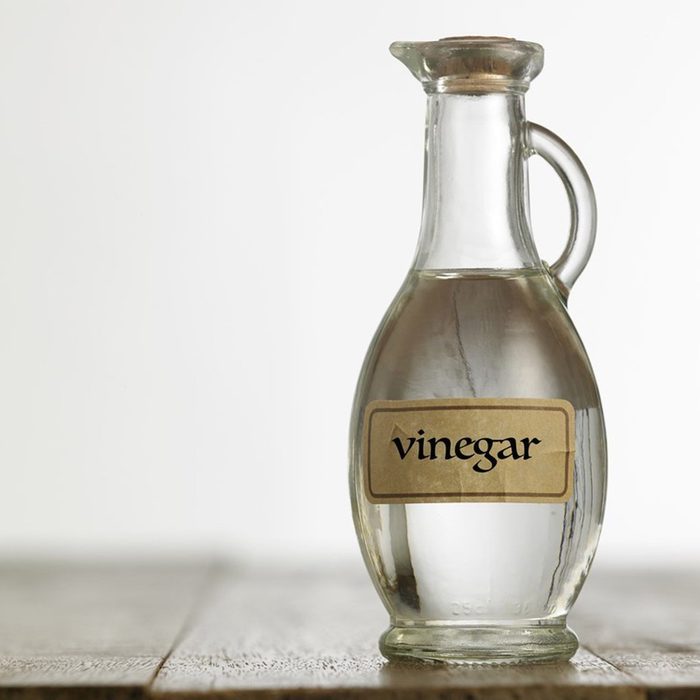
An Old-School Remedy
Just a little bit of research will show you that cleaning wood floors with white vinegar and water is highly contested, but it’s definitely worth a try if you’re looking to avoid harmful chemicals. Depending on the strength of acetic acid (the chemical component in vinegar that breaks down oils and sugars) you are looking to apply to your floors, go for anywhere from a half cup to a full cup of vinegar per gallon of water. Another plus side? If you’re into natural remedies, you likely already have a variety of vinegars in your cabinet or refrigerator (but probably avoid the red wine variety).
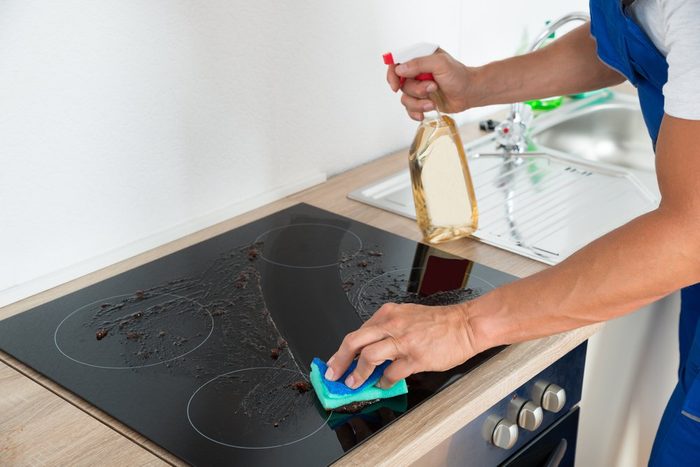
Clean Grease
Vinegar (acetic acid) cuts grease and doesn’t streak which makes it ideal for cleaning glass. We recommend a solution of 50 percent white vinegar and 50 percent tap water. In most cases, vinegar is a great all-purpose cleaner, but there are some things that you shouldn’t clean with it. Here are 8 things you should never clean with vinegar.
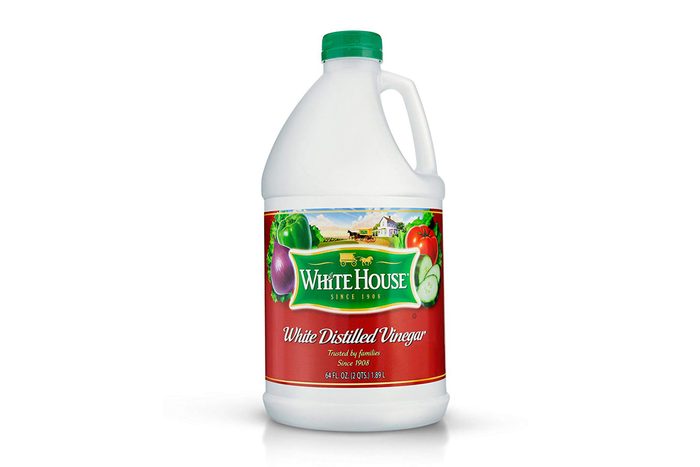
A Clear Staple
Even professionals clean with vinegar: For an all-purpose cleaning solution, here’s what Shepard and his crew recommend: mix equal measures of water and vinegar and a bit of freshly squeezed lemon juice. Pour in a spray bottle and shake. “The lemon juice adds a sweet citrus smell while adding additional cleaning oomph. The citric acid in lemon is also an effective cleanser and a great deodorizer,” says Shepard.
Vanessa Grimes of MaidGift advocates cleaning a baby’s nursery with vinegar. “When it comes to children’s rooms, it’s kind of difficult because most eco-friendly items do not offer the disinfecting elements. And, the ones that do, have such harsh chemicals. I like to clean the nursery with plain white distilled vinegar and a few drops of scented oils, which cleans and also disinfect the surfaces. Baby’s room is left with a fresh, clean smell.”
Note: Every product is independently selected by our editors. If you buy something through our links, we may earn an affiliate commission.